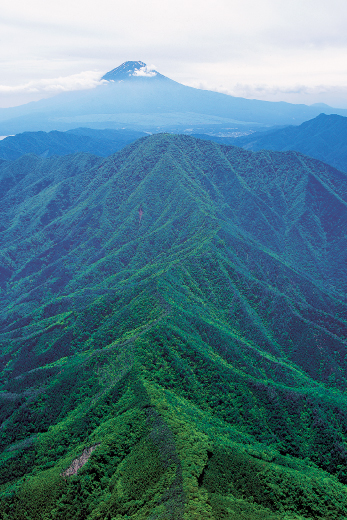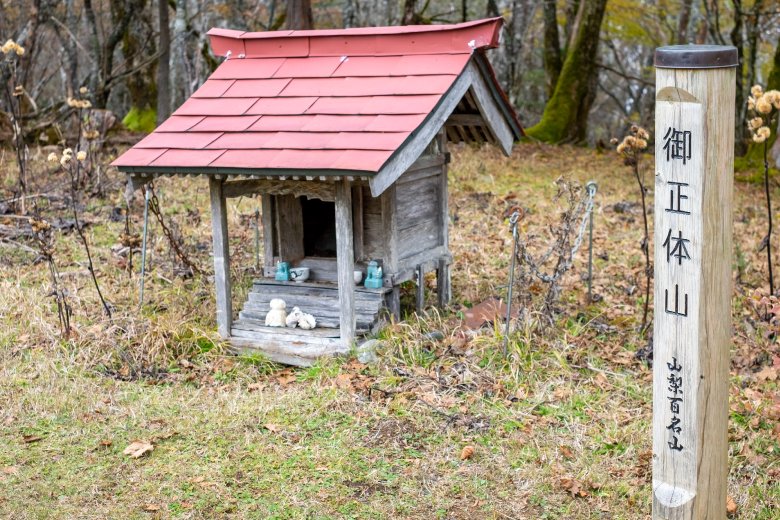Mount Mishotai is a 1681-meter-high mountain straddling Tsuru City and Doshimura Village. It was founded in 1813 during the late-Edo Period (1603-1868) by the priest Myoshin Shonin. In 1815, Myoshin Shonin fasted in a hall (Shonin-do Hall) erected on Mount Mishotai and entered nirvana. Subsequently, he was enshrined in the hall, attracting many worshippers.
As the second and third generations after Myoshin Shonin, Priestess Myosenni and Priest Kyokai Shonin spread the worship of Myoshin Shonin. However, followers were driven away after the Meiji Restoration Government issued a decree prohibiting the Shugen sect. Worship on Mount Mishotai thus rapidly declined, and Myoshin Shonin’s mummified body was thereafter enshrined in Yokokura-ji Temple located in his birthplace in 1890.
Mount Mishotai is one of the “100 Famous Mountains of Yamanashi.”
As the second and third generations after Myoshin Shonin, Priestess Myosenni and Priest Kyokai Shonin spread the worship of Myoshin Shonin. However, followers were driven away after the Meiji Restoration Government issued a decree prohibiting the Shugen sect. Worship on Mount Mishotai thus rapidly declined, and Myoshin Shonin’s mummified body was thereafter enshrined in Yokokura-ji Temple located in his birthplace in 1890.
Mount Mishotai is one of the “100 Famous Mountains of Yamanashi.”
COURSE MAP
Where to next?
Visiting Nishikatsura where the sounds of water and weaving machines play a beautiful melody
Sounds of the water and weaving machines flow at the foot of Mount Fuji.
The Road to Mount Fuji (Fuji-michi) runs to the south of and parallel to National Route 139. The old road in Konuma, Nishikatsura Town was called Shuku-michi. It was crowded by travelers to Mount Fuji from the Edo Period to modern times. In the Meiji Period (1868-1912), there was also a transit hub for horse-drawn stagecoaches in Konuma.
Konuma is the area where we first see the entire view of Mount Fuji with its gentle base spreading out. Worshippers of Mount Fuji might have been moved with the features that gradually increased as they approached from Edo.
A settlement of fabric wholesalers and flourishing businesses handling thread and woven fabrics centered on Yokohama developed along this road from the end of the Edo Period to the Meiji Period. Some weavers are still in business along the old road, and visitors sometimes hear the sounds made by the weaving machines.
Irrigation channels are spread throughout the town, even on the property of individual houses, supply copious amounts of water. This water is also essential for woven fabric production.
Konuma is the area where we first see the entire view of Mount Fuji with its gentle base spreading out. Worshippers of Mount Fuji might have been moved with the features that gradually increased as they approached from Edo.
A settlement of fabric wholesalers and flourishing businesses handling thread and woven fabrics centered on Yokohama developed along this road from the end of the Edo Period to the Meiji Period. Some weavers are still in business along the old road, and visitors sometimes hear the sounds made by the weaving machines.
Irrigation channels are spread throughout the town, even on the property of individual houses, supply copious amounts of water. This water is also essential for woven fabric production.
about 3㎞ / about 3 hours / on foot

